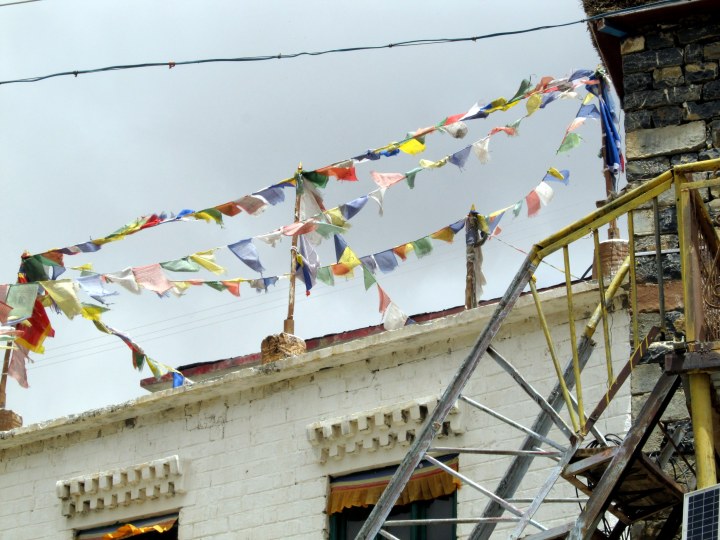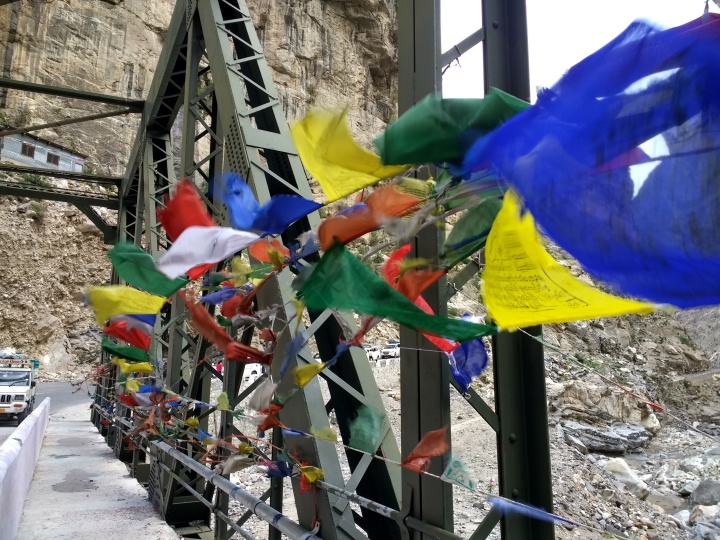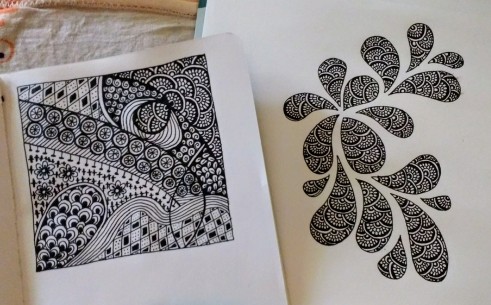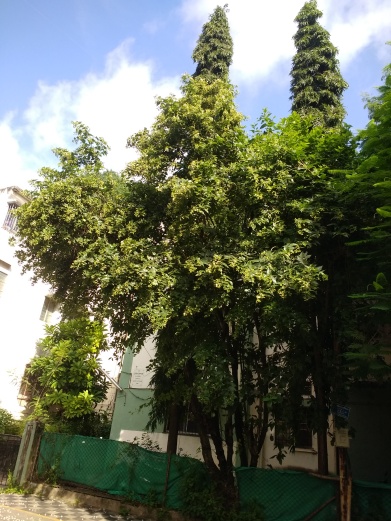Buddhist worship places (monasteries) as also homes are characterized by the presence of Prayer flags found tied to rooftops. They bear the mantra ‘Om Mani Padme Hum’ written on them, and are considered to bring good luck, peace, health and harmony. These appear extensively in photographs and movies. The sight of these colourful flags fluttering against a clear blue sky, always makes for a very soothing and positivism inducing photograph. I have had a fascination for these since a long period of time.
I always wanted to hang these at home for all the positive vibes and good luck that they bring; and of course for the beautiful colour filled sight they create. There are several Buddhist regions in and around India and many of my friends who have visited these places have gifted me these prayer flags as souvenirs from their trips. However, something always stopped me from putting these up at home. I always felt that I needed to experience the sight of these flags in person to really bring back a part of it home. And so, despite having many sets of these flags, I decided that I ll hang them up at home only when I get an opportunity to truly experience the sight of these and have a memory to go back to, upon looking at these at home.
I was fortunate enough to visit the Spiti Valley in Himachal Pradesh earlier this year. Spiti Valley is a cold desert area in the Himalayas, composed of small Buddhist villages. The place is home to some of the highest villages in the world and has very old monasteries that have tremendous historical significance in the Buddhist culture. And thus I finally got to witness many pretty sights of the prayer flags at the Buddhist villages in Spiti! Through discussions with the local people, I learnt a lot more about these flags and the Buddhist prayers on this visit, making it one of the memorable aspects of this trip.
To briefly update on the prayer flags and the mantra written on them, these flags are in groups of 5 flags; with either the format Om Ma Ni Padme Hum or Om Mani Pae Me Hum. Each alphabet is written on one flag and bears one of the fixed colours blue, white, red, green, yellow (symbolizing the five elements of Nature). Some flags may have more elaborate descriptions written as well. These sets of 5 flags appear in repeats along the string which is used for hanging/tying these to doors or roof tops. Sometimes these are also present in a vertical way, arranged one below the other along a rod/stick. These vertical kind of prayer flags are often found at monasteries, stupas and places of worship.
The mantra written on these flags symbolizes a way of transformation of one’s impure self to the pure self of Buddha. I love this underlying philosophy of the Buddhist way which acknowledges that no person is born without any flaws. Every person has his or her own impurities and flaws. All good qualities are also contained within us itself; which can be emphasized upon and built up to attain the pure self of Buddha. Chanting these prayers is a way of invoking our inner compassionate self, overcoming our impurities and connecting to Buddha.
The literal meanings of the mantra is as follows:
Om :Body, speech, mind of self and of Buddha
Mani : Literal meaning ‘jewel’. Represent a method of connection, of enlightenment
Padme : Literal meaning ‘Lotus’. Represents wisdom required to rise above self
Hum : Representation of invisibility. Signifies union of methods and wisdom for self enlightenment.
With this amazing philosophical message attached, the Buddhist prayer flags attain a special significance in these villages. In my visit to the Spitian villages, I noticed that these prayer flags were a prominent feature. You see them adorning the rooftops of almost all houses, shops, and commercial buildings in this area. The composition of the village and settlement in general, has a very soothing and positive look due to these flags. It’s as if the prayer flags are caretakers of that region. With their positive vibes, good luck, and a command over the forces of nature, they make for a security force of the village. For me personally, this was the first experience of looking at so many prayer flags, full and rich with colour, all around me. And I experienced a serenity and peace like never before. As these flags flutter with the wind, they seem to spread a beautiful sort of positivism towards you. They represent good luck, optimism and above all a path of enlightenment that you may have been searching for or were stuck at.
There are times during travel when all you want to do is pause, look around and soak in the place, close your eyes and make a memory. I call it the creation of a mind photograph. Generally, I end up getting this feeling primarily while being amidst nature. But with the prayer flags, it probably is the first man-made thing that made me stare at it for hours and build up a memory so quiet, so peaceful, almost meditative.
Needless to say, I was completely in love with these flags on this trip. I ended up clicking lots of pictures of these as they sat on every home, every stupa, every monastery, every construction site, every bridge. What will follow here is a photo series of these flags as I captured them at different locations in the villages. I hope through these pictures, I can manage to convey to you at least a fraction of the peace and excitement that I witnessed by looking at these. I wish you all an opportunity to witness the fluttering of these flags in a native land!!

En route to Spiti Valley, Kinnaur Kailash range, Kalpa

Spitian home, Tabo

A stupa at the Dhankar Lake, Dhankar

Spitian home, Kaza, Spiti

The Old Monastery, Dhankar

A random click while driving through Spitian villages

A bridge near Pin Valley

A bridge near a contruction site

Prayer flags at the Stupa at Langza

Fluttering high above our heads! Komik, Spiti
![]()
![]()
















